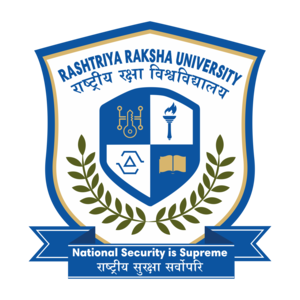
Extra Judicial Killings - A Blotch on Rule of Law
Extra Judicial Killings - A Blotch on Rule of Law
- Amarpal Singh, UPES Dehradun
Introduction
The act of killing an accused outside the judicial process is referred to as extrajudicial killing . This devious act was first invented by the British during their rule in India to suppress the voice of dissent . The underhand practice of Extrajudicial killings is not new in India. There are several instances of Extrajudicial killing commonly referred to as fake encounter ranging from the carnage of Bhagalpur blinding in 1979 – 1980 to alleged “fake encounter” of 4 accused who were booked for rape and murder of veterinarian doctor by the Telangana Police in the year 2019 which is under investigation by the committee set up by the Supreme Court of India and alleged fake encounter by the U.P Police of Vikas Dubey, a gangster from Kanpur who was booked for killing 8 police officers in the year 2020. In a reply to the Right to Information application (hereinafter RTI) filed by Firstpost. The National Human Rights Commission ( hereinafter NHRC) had stated that it has registered 1,782 fake encounters in India between the year 2000 and 2017 . This is becoming a great concern for the judicial system in the country as it deprives the accused of the right to free and fair trial. The right to a free and fair trial is said to be sine qua non of Article 21 which guarantees Right to life and personal liberty as a fundamental right under the Indian Constitution.
The Supreme Court of India (-hereinafter Supreme Court) in the case of K. Anbazhagan .v. Supdt of Police observed that “if a criminal trial is not fair and free from bias. The criminal justice of the country would be at stake, the confidence of the public in the system would be shaken and it will bring desolation to the rule of law.”
Reasons for Encounters
Fake encounters are failure of the law enforcement bodies to hold the criminal accountable for their crimes according to the \'due process\' of law. One of the most important reasons for Extrajudicial killings is the backlog of cases in the judiciary. The trial of prisoners continues for years and the outcome of which is also uncertain. There are almost more than three crore cases which are pending in the Supreme Court and High Courts in India . This also causes a lack of faith in the judiciary by the public which also contributes to public outrage supporting the Extrajudicial killings. The establishment of ‘fast track\' courts to ensure speedy justice and police reforms are need of the hour to prevent extrajudicial killings.
Laws dealing with Encounters
There are no provisions under the Indian law which directly authorize the police officer to encounter criminals. However, there is some enabling provision that can be construed to confer power on the police officer to use force against a criminal. There is a right to private defence under Indian Penal Code, 1860 available with the police officers which states "that any person may exercise his right of private defence which may also extend to cause death if there is apprehension in the mind of the person exercising the right of death or limb . This right cannot be exercised by the police officer in the case of retaliation .
The Code of Criminal Procedure, 1973 also permits a police officer to use all means to arrest the accused if he forcibly resists the endeavour to arrest him or evade such arrest . The Indian Penal Code, 1860 also provides an exception if an encounter is done by the police officer. Exemption 3 of Section 300 states that -Culpable homicide is not murdered if it is done by the offender who is public servant exercises his right of private defence in good faith and exceeds his power conferred to him by law and causes the death of such person. These provisions under the Indian have added a protective layer for public servants, so they can discharge their duty effectively and in the interest of the Society.
NHRC guidelines in cases of deaths in police encounters
Justice M.N Venkatchaliah who was then the -Chairperson of NHRC in 1977 wrote to all the Chief Ministers of the state. In the letter, he expressed his concern over the increase in the number of complaints of fake encounters by the police and recommended following guidelines on behalf of the commission to be followed in the cases of encounter –
1.When the police officer who is in charge of the police station receives information regarding the death in the encounter between police parties and another person, he shall record such information in the appropriate register.
2.The information which is received should be regarded as sufficient to suspect any cognizable offence and immediate steps should be taken in the facts and circumstances which lead to the death of the person and if any offence was committed and by whom.
3.If the police party is member of the same police station in that situation the case should be transferred to any independent investigation agency such as State CID.
4.If the police officers are prosecuted and convicted based on the result of the investigation compensation may be granted to the kin of the deceased.
In the year 2010, these guidelines were extended by the NHRC by including
1.An inquiry must be held by the Magistrate in cases of death in police action expeditiously (-preferably within 3 months).
2.In all cases of death in police action in the state, a preliminary report must be sent to the District Magistrate within 48 hours of death. Further, a second report must be sent within 3 months mentioning details such as post-mortem report, finding of magisterial inquiry etc.
Judicial Pronouncement relating to Encounters by the Police.
In the case of Om. Prakash & Ors. .v. State of Jharkhand The Supreme Court held that it is not the duty of the police to kill the accused on the ground that he is a dreaded criminal. Further, the court observed that encounters amount to state-sponsored terrorism.
The Supreme Court has also laid down sixteen guidelines which are required to be followed in cases of death by police encounter for an effective and independent investigation in the case of PUCL.v. State of Maharashtra some of the guidelines are as follows
1.Whenever a police party receives any information or tip-off regarding any criminal activities which relate to the commission of grave offence they shall reduce such information inwriting.
2.If an encounter takes place in pursuant to the information received by the police and there is any use of firearms by the police party then in such case FIR must be registered for proper criminal investigation and such FIR should be forwarded to court without any delay.
3.An investigation into such death should be carried out by an independent investigation CID team or police team of another police station.
4.The NHRC must be immediately informed about the encounter.
5.If the action amounts to an offence under IPC, disciplinary action must be taken against the police officer found guilty and for the time being the police officer must be suspended.
Conclusion
The public all over the country is rejoicing at the killing of the criminals by the police. There is a dire need for judicial and police reforms which are needed to rebuild the public trust and stop them from casting aspersion. In a democracy like India where the Constitution acts as a guiding light and guarantees justice according to the due process of law. It should be the responsibility of every organ to act within its constitutional responsibility.
References -
1. legal Aspect of Extra-Judicial killings\'<https://www.jatinverma.org/extrajudicial-killings-in-india-an-analysis> accessed 27 July 2020.
2. N Venugopal ‘Fake Encounter: Story from Andhra Pradesh’ Economic &Political weekly( India, Oct 13-19 2007 )
3. Farzand Ahmed ‘Bhagalpur blindings represents one of the darkest chapters in history\'<https://www.indiatoday.in/magazine/special-report/story/19801231-bhagalpur-blindings-represents-one-of-the-darkest-chapters-in-indias-history-773650-2013-11-29> accessed 27 July 2020.
4. <https://www.livemint.com/news/india/telangana-police-encounter-nhrc-begins-probe-pil-in-sc-seeks-action-against-cops-11575773614336.html> accessed 27 July 2020.
5. <https://www.firstpost.com/india/nhrc-registered-1782-fake-encounter-cases-between-2000-2017-uttar-pradesh-alone-accounts-for-44-55-4332125.html> accessed 27 July 2020.
6. AIR 2004 SC 524
7. <https://www.prsindia.org/policy/vital-stats/pendency-cases-judiciary#:~:text=As%20of%20April%202018%2C%20there,before%20the%2024%20High%20Courts.> accessed 28 July 2020.
8. Indian Penal Code, s 100.
9. Extra Judicial Families Victim Association &Ors. .v. Union of India AIR 2016 SC 3400.
10. Code of Criminal Procedure, 1973 s 46.
11.<https://nhrc.nic.in/sites/default/files/CasesOfEncounterDeaths.pdf> last accessed 29 July 2020.
12. <https://www.drishtiias.com/daily-updates/daily-news-analysis/extra-judicial-killings> last accessed 29 July 2020.
13 2012 BomCR (Cri) 339.
14. MANU/SC/0882/2014












